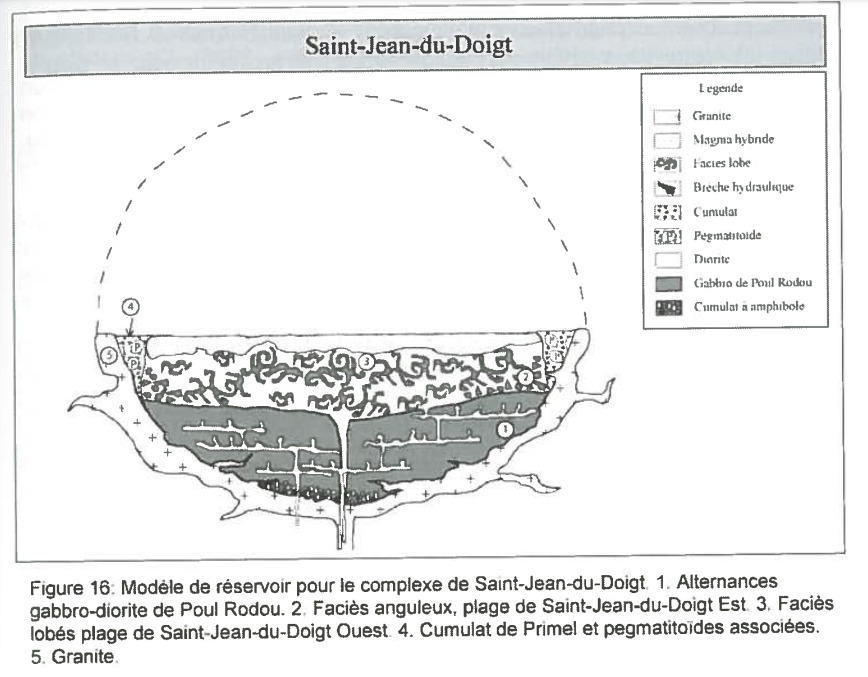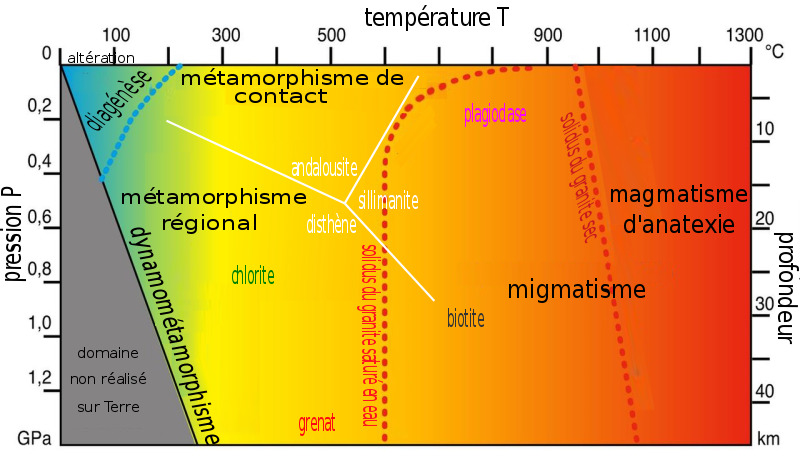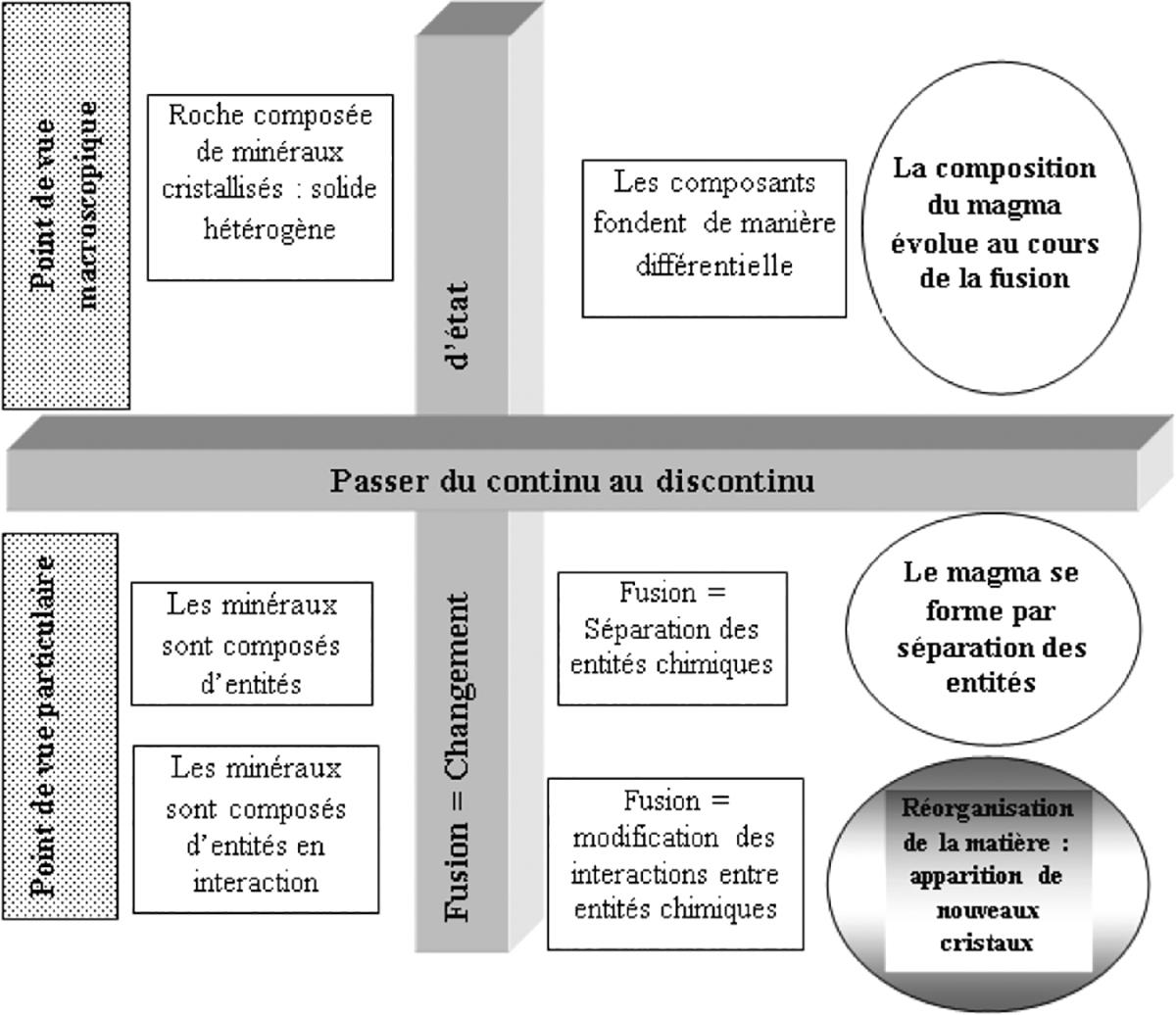
Cette cache n'est pas accessible à marée haute voire moyenne
This cache is not accessible at high or medium tide

click on the flag to reach the translation

Une Earthcache
Il ne s’agit pas d’une cache physique. Pour loguer cette cache, vous devez dans un premier temps prendre connaissance de sa description éducative en matière de géologie, puis d’observer le site sur lequel vous êtes, et enfin de répondre aux questions qui vous seront posées.
Vous pourrez alors loguer en "Found it" sans attendre mais vous devez me faire parvenir vos réponses en même temps en me contactant soit par mail dans mon profil, soit via la messagerie geocaching.com (Message Center), et je vous contacterai en cas de problème. Les logs enregistrés sans réponses seront supprimés.

Un peu de géologie
> Un réservoir magmatique
St Jean du Doigt est le lieu d’un réservoir magmatique d’une dizaine de kilomètres de diamètre présentant différents lits. Un tel réservoir se met en place dans les niveaux intermédiaires de l’écorce terrestre (10-15km de profondeur. Il présente une association de faciès différents, allant des gabbros jusqu’aux granites, en passant par des faciès intermédiaires tels les diorites. Il a également la particularité de présenter des structures d’instabilité gravitaire telles des diapirs ou des pipes.

> Anatexie
L’anatexie est une fusion partielle des roches dans la croûte terrestre. C'est l'augmentation de température qui est à l'origine de l'anatexie. L’anatexite est la roche issue de ce processus.
Les roches métamorphiques peuvent être enfouies à des conditions de température et de pression suffisantes pour déclencher la fusion d'une partie des minéraux constituants, ce qui engendre des bains silicatés appelés magmas secondaires ou anatectiques.
La roche partiellement fondue se transforme en anatexite ou en migmatite.
Si la fusion est plus importante, les produits de la fusion partielle peuvent se rassembler pour former un magma et, si celui-ci est de nature acide, on obtiendra un granite d'anatexie après refroidissement.
L'anatexie provoque essentiellement des modifications de la texture et un changement de la composition minéralogique quantitative des roches.

Diagramme pression-température (P-T) représentant les domaines de métamorphisme, de migmatisme et d'anatexie.
> Palingenèse
On ne devra pas confondre anatexie et palingenèse (renaissance), qui implique la réutilisation, la remobilisation, la refusion de matériaux consolidés depuis de longues périodes. Un granite résultant d'une anatexie peut être repris par palingenèse
> Cristallisation
Dans un magma en équilibre, une phase nouvelle ne peut s'individualiser que si le liquide devient saturé par rapport à celle-ci, à la suite de changements dans les facteurs d'équilibre (température, pression, composition, etc.). Ainsi le refroidissement détermine la formation, successive ou simultanée, de cristaux et la séparation d'une phase gazeuse. Les modalités de la germination et de la croissance des cristaux dépendent de la composition, de la structure et des propriétés du magma, mais aussi de la façon dont varient les différents facteurs, permettant ou non le maintien de l'équilibre ; le comportement des cristaux formés joue alors un rôle capital.

Fusion = changement d’état

Questions
Question 0 - Prenez une photo de vous, ou de votre objet distinctif de géocacheur, ou de votre pseudo écrit sur une feuille de papier ou dans votre main... dans ce magnifique paysage volcanique, et joignez-là à votre log ou à vos réponses

Zone d'observation - Nous allons ici observer uniquement une zone unique, qui nous pose quelques questions quant à sa formation.
Cette earthcache est cotée en difficulté élevée. Elle vous demande une réflexion, avec le support de la leçon et l’observation faite, pour défendre 3 hypothèses et promouvoir celle qui vous semblera la plus plausible. Il est attendu que la qualité de l’observation que vous rapportez soit en accord avec la difficulté de la cache.

Observation1 - la roche dans son ensemble.
Question 1 - Au simple regard, quelle différence majeure faites-vous entre les parties A et B de cette roche ?
Question 2 - Décrivez maintenant le raccord en ces 2 zones : régularité, fissure ou fracture, coexistence ou immixtion de A dans B et inversement…
Question 3 - Observez maintenant la forme de la roche, qu’elle a pris à son refroidissement magmatique : A et B sont-elles similaires, auquel cas il s’agirait du même granite de formation, ou sont-elles différentes, auquel cas il s’agirait de granites différents de formation ?

Observation2 - restez sur le même site mais grimpez quelques dizaines de centimètres au niveau de la partie B
Question 4 - Qu’observez-vous ici ?
Question 5 - La cristallisation des parties A et B est-elle similaire ?
Question 6 - En vous appuyant sur les explications de la leçon sur la cristallisation, quel enseignement en tirez-vous ?
Nous allons maintenant étudier 3 hypothèses, il vous est demandé d’expliquer géologiquement le pour et le contre de chaque hypothèse
Hypothèse 1 - B est une veine ou un filon dans A
Question 7 - Quels éléments vous feraient retenir cette hypothèse, quels éléments vous feraient ne pas la retenir ?
Hypothèse 2 - 2 fluides granitiques légèrement différents dans leur composition qui se sont écoulés en même temps côte à côte
Question 8 - Quels éléments vous feraient retenir cette hypothèse, quels éléments vous feraient ne pas la retenir ?
Hypothèse 3 - un coup de chaud sur la partie B
Question 9 - On parlerait alors plutôt d’anatexie ou de palingenèse, et pourquoi ?
Question 10 - Quels éléments vous feraient retenir cette hypothèse, quels éléments vous feraient ne pas la retenir ?


An Earthcache
It is not a physical cache. To log this cache, you must first learn about its educational description in geology, then observe the site on which you are, and finally answer the questions that will be asked.
You can then log in "Found it" without waiting but you must send me your answers at the same time by contacting me either by mail in my profile, or via the messaging geocaching.com (Message Center), and I will contact you in case of problem. Saved logs without answers will be deleted.

A little of geology
> A magmatic reservoir
St Jean du Doigt is the site of a magmatic reservoir about ten kilometers in diameter with different beds. Such a reservoir is set up in the intermediate levels of the earth's crust (10-15km deep. It presents an association of different facies, ranging from gabbros to granites, passing through intermediate facies such as diorites. also has the particularity of presenting structures of gravity instability such as diapirs or pipes.

> Anatexia
Anatexia is a partial fusion of rocks in the earth's crust. It is the increase in temperature that is the cause of anatexia. Anatexite is the rock that results from this process.
Metamorphic rocks can be buried under conditions of temperature and pressure sufficient to trigger the fusion of part of the constituent minerals, which generates silicate baths called secondary or anatectic magmas.
Partially molten rock turns into anatexite or migmatite.
If the fusion is more important, the products of the partial fusion can join together to form a magma and, if this is acidic in nature, one will obtain an anatexic granite after cooling.
Anatexia essentially causes changes in texture and a change in the quantitative mineralogical composition of rocks.

Pressure-temperature (P-T) diagram representing the domains of metamorphism, migmatism and anatexia.
> Palingenesis
One should not confuse anatexis and palingenesis (rebirth), which involves the reuse, remobilization, remelting of materials consolidated for long periods. A granite resulting from anatexia can be taken up by palingenesis
> Crystallization
In a magma in equilibrium, a new phase can only become individualized if the liquid becomes saturated with respect to it, following changes in the equilibrium factors (temperature, pressure, composition, etc. ). Thus cooling determines the formation, successive or simultaneous, of crystals and the separation of a gas phase. The methods of crystal germination and growth depend on the composition, structure and properties of the magma, but also on the way in which the various factors vary, whether or not allowing the balance to be maintained; the behavior of the crystals formed then plays a major role.

Fusion = change of state

Questions
Question 0 - Take a picture of yourself, or your geocacher feature, or your nickname written on a piece of paper or in your hand ... in front of this beautiful volcanic landscape, and attach it to your log or your answers

Observation zone - We are going to observe here only a single zone, which asks us some questions about its formation.
This earthcache is rated in high difficulty. It asks you to think carefully, with the support of the lesson and the observation made, to defend 3 hypotheses and promote the one that seems most plausible to you. The quality of the observation you report is expected to meet with the difficulty of the cache.

Observation1 - the rock as a whole.
Question 1 - At a glance, what major difference do you make between parts A and B of this rock?
Question 2 - Now describe the connection in these 2 zones: regularity, crack or fracture, coexistence or interference of A in B and vice versa ...
Question 3 - Now observe the shape of the rock, which it took on its magmatic cooling: are A and B similar, in which case it would be the same granite of formation, or are they different, in which case it would be different granites of formation?

Observation2 - stay on the same site but climb a few tens of centimeters to the level of part B
Question 4 - What are you observing here?
Question 5 - Is the crystallization of parts A and B similar?
Question 6 - Based on the explanations of the lesson on crystallization, what lesson do you draw?
We are now going to study 3 hypotheses, you are asked to geologically explain the pros and cons of each hypothesis
Hypothesis 1 - B is a vein in A
Question 7 - What elements would make you retain this hypothesis, what elements would make you not retain it?
Hypothesis 2 - 2 granitic fluids slightly different in their composition which flowed at the same time side by side
Question 8 - What elements would make you retain this hypothesis, what elements would make you not retain it?
Hypothesis 3 - a heat stroke on part B
Question 9 - We would then rather speak of anatexia or palingenesis, and why?
Question 10 - What elements would make you retain this hypothesis, what elements would make you not retain it?